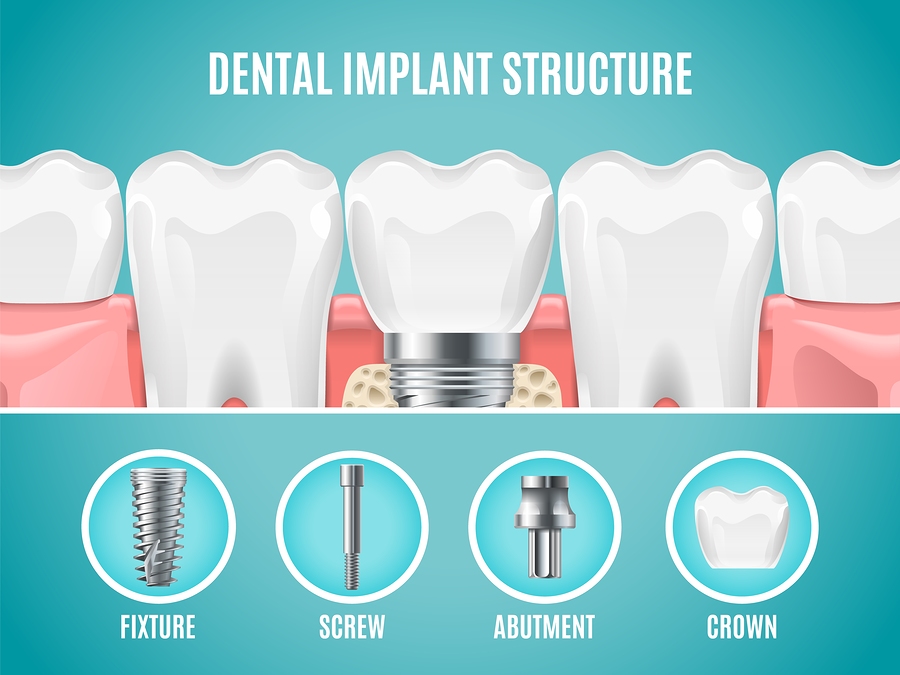What Does Dental Sense Mean?
Table of ContentsDental Sense Fundamentals ExplainedFascination About Dental SenseThe Ultimate Guide To Dental SenseDental Sense - An Overview
are medical devices operatively implanted right into the jaw to recover an individual's ability to eat or their appearance. They provide assistance for fabricated (fake) teeth, such as crowns, bridges, or dentures. When a tooth is lost because of injury or disease, an individual can experience issues such as rapid bone loss, defective speech, or modifications to eating patterns that cause discomfort.Dental dental implant systems consist of a dental implant body and oral implant joint and may additionally include an abutment fixation screw. Kids dental. The oral implant body is operatively placed in the jawbone instead of the tooth's root. The oral implant joint is normally affixed to the implant body by the abutment fixation screw and expands with periodontals right into the mouth to sustain the affixed artificial teeth
(https://www.mixcloud.com/dentalsense1/)Structure of The Dental Implant System choosing dental implants, speak with your oral supplier regarding the possible advantages and dangers, and whether you are a prospect for the treatment. Things to consider: Your overall health is an essential consider identifying whether you are a great candidate for dental implants, how much time it will take to recover, and how much time the dental implant may remain in place.
Smoking cigarettes may impact the recovery procedure and reduce the long-lasting success of the dental implant. The recovery process for the implant body might take several months or longer, throughout which time you commonly have a temporary joint in place of the tooth. the dental implant procedure: Thoroughly comply with the oral hygiene directions offered to you by your dental service provider.
How Dental Sense can Save You Time, Stress, and Money.
Implant failure can result in the demand for one more operation to take care of or change the dental implant system. Restores the capacity to eat Brings back aesthetic look Aids keep the jawbone from reducing as a result of bone loss Maintains the health and wellness of the bordering bone and periodontals Aids keep adjacent (nearby) teeth stable Improves top quality of life Damages to bordering natural teeth throughout implant placement Injury to the surrounding cells during surgical treatment, such as sinus perforation Injury throughout surgical treatment (for instance, crack of surrounding jawbone) Inadequate feature, such as seeming like the teeth do not bite with each other usually An experience that the tooth hangs or twisting in position resulting from a joint screw loosening up Implant body failure (looseness of the dental implant body) due to systemic infection, which may be a lot more likely in individuals with unrestrained diabetes mellitus due to local infection in bone and gum tissues sustaining the implant body due to postponed healing, which may be extra likely in people who smoke Problem cleaning the periodontals around the dental implant, leading to poor oral hygiene Unattended gum illness Post-surgical pins and needles due to nerve impingement or damage Constantly notify healthcare suppliers and imaging technicians that you have oral implants prior to any type of magnetic resonance imaging (MRI) or x-ray procedures.
FDA is not familiar with any kind of adverse events reported for MRI or x-ray procedures with dental implants. Dental implants systems are usually made of products that follow international consensus criteria of the International Company for Standardization (ISO) or ASTM International. These criteria have details of what makes a risk-free material.

A dental implant is a framework that changes a missing out on tooth. With screw-like devices, the cosmetic surgeon inserts a dental implant into the jawbone, and it works as an anchor for a fabricated tooth, called a crown. A tool called an abutment attaches the fabricated tooth to the oral implant. The crown is tailor-made to fit the person's mouth and match the shade of their teeth.
The Ultimate Guide To Dental Sense
Some individuals are not qualified for dental implant surgery. It is for dental surgeons to operate individuals with: severe illnessuncontrollable metabolic diseasebone or soft tissue condition or infectionIf these concerns are fixed, an individual can have the surgery. In, dental cosmetic surgeons avoid from operating individuals with: If individuals with any one of the above undergo oral implant surgery, there is a greater danger of the dental implant falling short.

Oral dental implant surgical treatment is an individualized process. Give you time to recover. Connect the blog post and final crown, bridge or denture.
Next off, your surgeon will carefully position the dental implant right into your jaw. Lastly, your specialist will certainly reposition your periodontals and shut the laceration with stitches. If your implant is near the front of your mouth, your dental professional will make a short-lived tooth for you to wear until you heal. That way, you will not have a gap in your smile while you recover.
All about Dental Sense
Your supplier can inform you what to anticipate in your circumstance. During the healing phase, your jawbone ought to fuse to the dental implant. This procedure, called osseointegration, is important for security and long-term success. This process can take anywhere from three to nine months. In some instances, it may take longer.
When your implant heals, your dentist can affix the abutment (small connector post) and your final remediation (crown, bridge or denture). This normally takes about one hour to finish and might call for a 2nd minor surgical procedure. You should not feel any kind of discomfort during your oral implant procedure since your provider will certainly utilize drug to numb your periodontals.